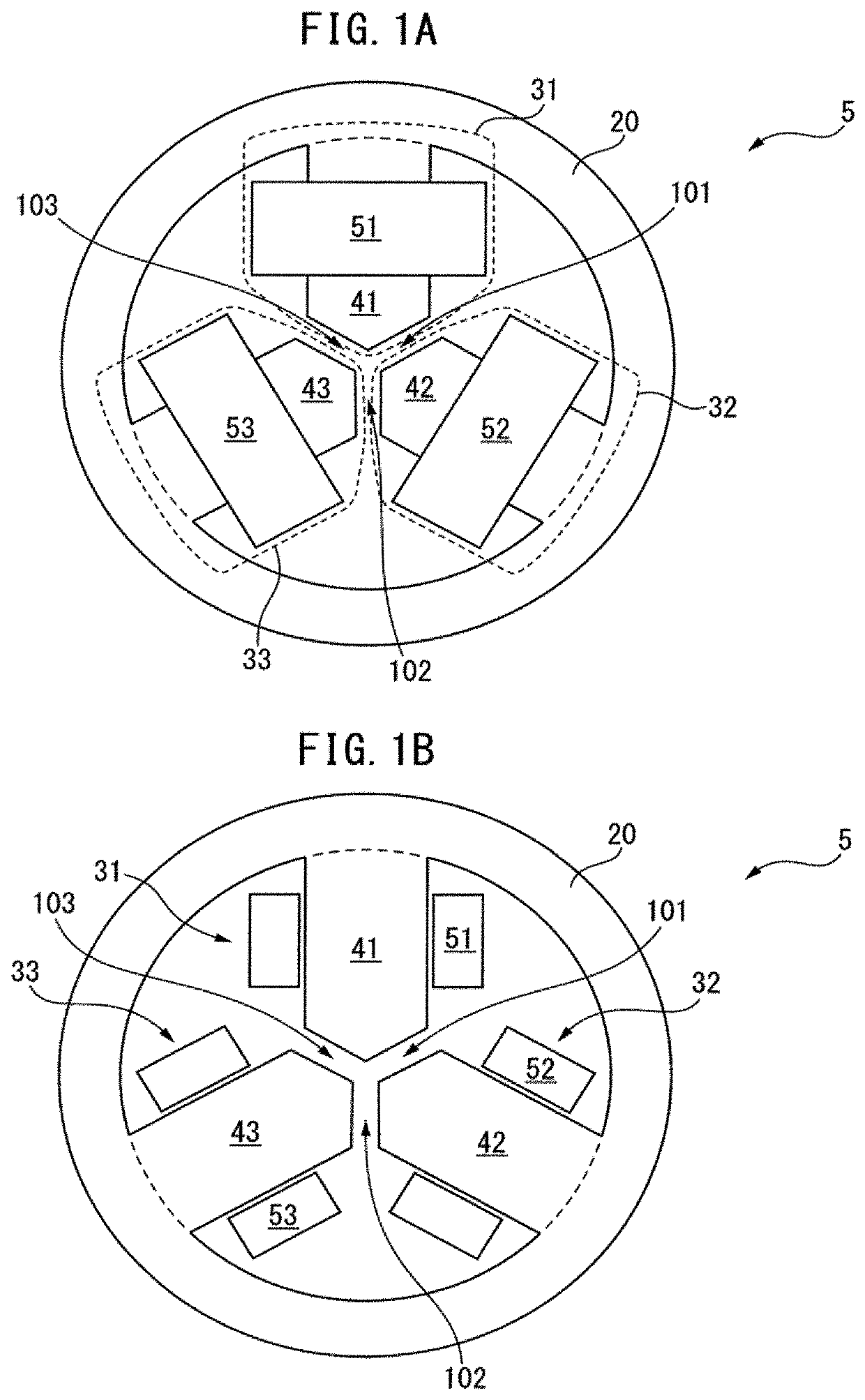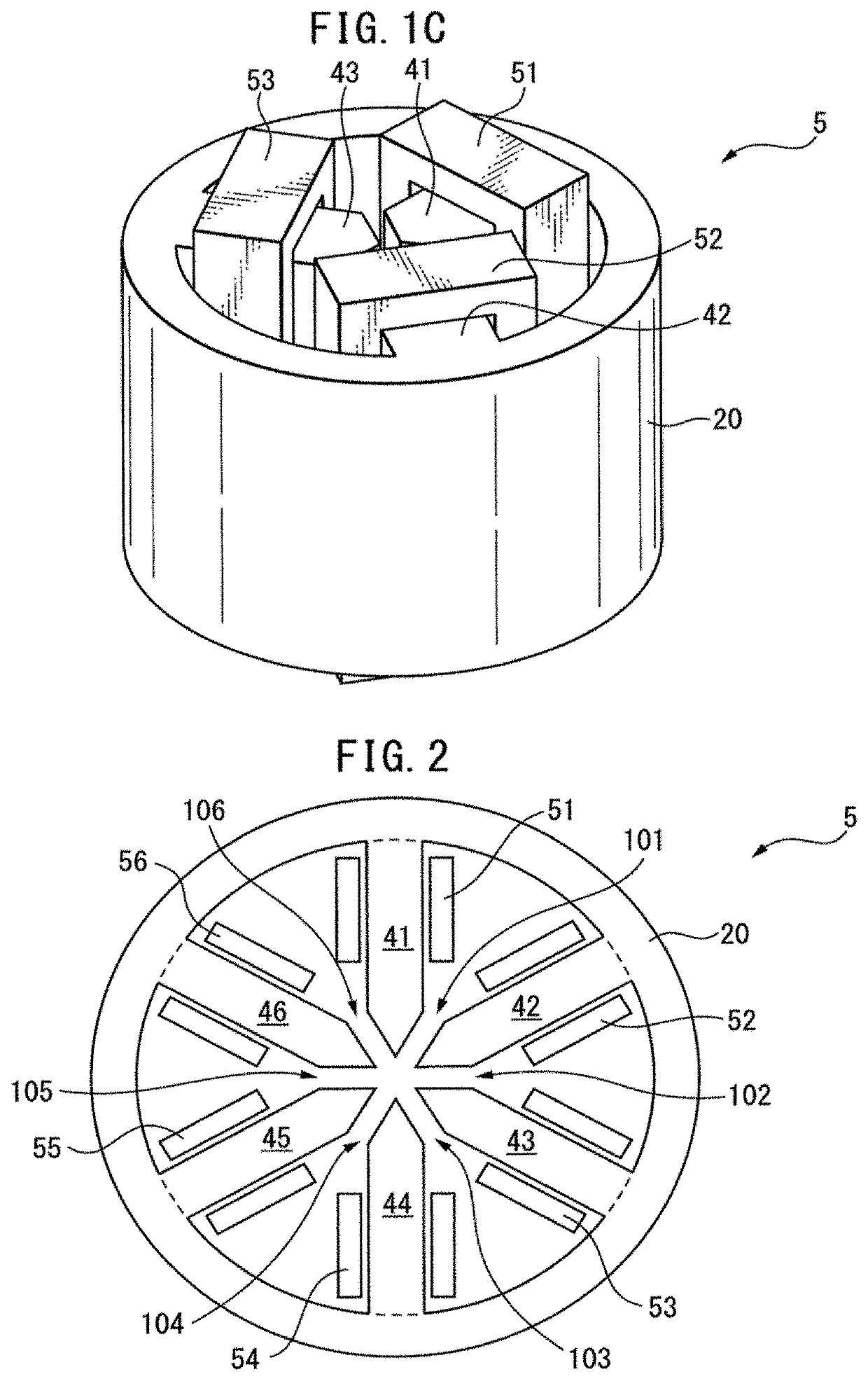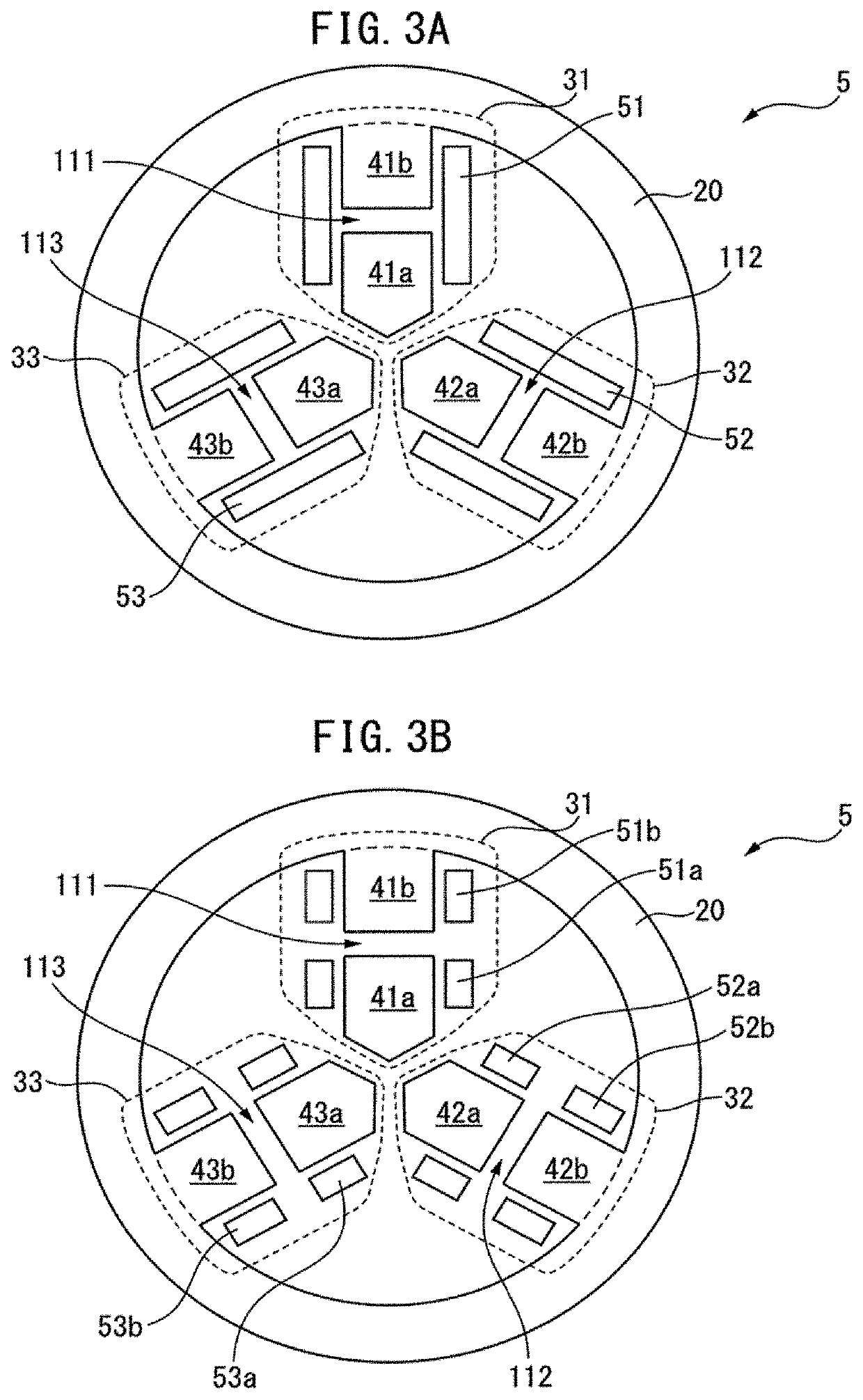Three-phase reactor comprising iron-core units and coils
a three-phase reactor and iron-core technology, applied in the direction of inductance, fixed transformers, cores/yokes, etc., can solve the problems of inability to ideally output imbalanced inductance, and inability to achieve a three-phase alternating current. , to achieve the effect of reducing the loss caused by a leakage flux
- Summary
- Abstract
- Description
- Claims
- Application Information
AI Technical Summary
Benefits of technology
Problems solved by technology
Method used
Image
Examples
first embodiment
[0087]FIG. 1A is a top face view of a three-phase reactor according to the present invention. Further, FIG. 1B is a cross-sectional view of the three-phase reactor illustrated in FIG. 1A, and FIG. 1C is a perspective view of the three-phase reactor illustrated in FIG. 1A.
[0088]As illustrated in FIG. 1A, FIG. 1B, and FIG. 1C, a three-phase reactor 5 includes: an outer peripheral iron core 20; and three iron-core coils 31 to 33 of which each is magnetically connected to the outer peripheral iron core 20. In FIG. 1A, the iron-core coils 31 to 33 are arranged in the inside of the outer peripheral iron core 20 having a ring shape. The iron-core coils 31 to 33 are spaced from each other circumferentially at regular intervals in the three-phase reactor 5.
[0089]As can be seen from the drawings, the iron-core coils 31 to 33 include: corresponding iron cores 41 to 43 that radially extend; and corresponding coils 51 to 53 wound around the iron cores. The radially outer end of each of the iron ...
second embodiment
[0094]FIG. 2 is a cross-sectional view of a three-phase reactor according to the present invention. A three-phase reactor 5 illustrated in FIG. 2 includes: an outer peripheral iron core 20; and iron-core coils 31 to 36, each of which is magnetically connected to the outer peripheral iron core 20, and which are similar to those described above. The iron-core coils 31 to 36 include: corresponding iron cores 41 to 46 that radially extend; and corresponding coils 51 to 56 wound around the iron cores.
[0095]The front end angle of the radially inner end of each of the iron cores 41 to 46 of the three-phase reactor 5 illustrated in FIG. 2 is about 60 degrees. The radially inner ends of the iron cores 41 to 46 are spaced from each other through gaps 101 to 106 that can magnetically connect the radially inner ends to each other. As described above, the three-phase reactor 5 may include the iron-core coils 31 to 36 of which the number is a multiple of 3.
[0096]It is obvious that effects that ar...
third embodiment
[0097]FIG. 3A is a cross-sectional view of a three-phase reactor according to the present invention. Iron cores 41 to 43 that radially extend in iron-core coils 31 to 33 in a three-phase reactor 5 illustrated in FIG. 3A include first iron-core units 41a to 43a that are located in radially internal sides, and second iron-core units 41b to 43b that are located in radially external sides, respectively. Iron-core unit gaps 111 to 113 that can magnetically connect the first iron-core units 41a to 43a and the second iron-core units 41b to 43b are formed between the first iron-core units 41a to 43a and the second iron-core units 41b to 43b. Further, the three-phase reactor 5 includes coils 51 to 53 that are wound around both the first iron-core units 41a to 43a and the second iron-core units 41b to 43b, respectively.
[0098]Further, FIG. 3B is a cross-sectional view of another three-phase reactor according to the third embodiment of the present invention. Iron cores 41 to 43 that radially ex...
PUM
| Property | Measurement | Unit |
|---|---|---|
| front end angle | aaaaa | aaaaa |
| front end angle | aaaaa | aaaaa |
| magnetic flux density | aaaaa | aaaaa |
Abstract
Description
Claims
Application Information
 Login to View More
Login to View More - R&D
- Intellectual Property
- Life Sciences
- Materials
- Tech Scout
- Unparalleled Data Quality
- Higher Quality Content
- 60% Fewer Hallucinations
Browse by: Latest US Patents, China's latest patents, Technical Efficacy Thesaurus, Application Domain, Technology Topic, Popular Technical Reports.
© 2025 PatSnap. All rights reserved.Legal|Privacy policy|Modern Slavery Act Transparency Statement|Sitemap|About US| Contact US: help@patsnap.com



